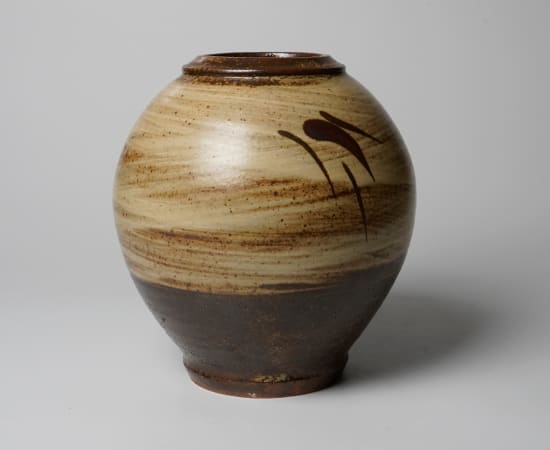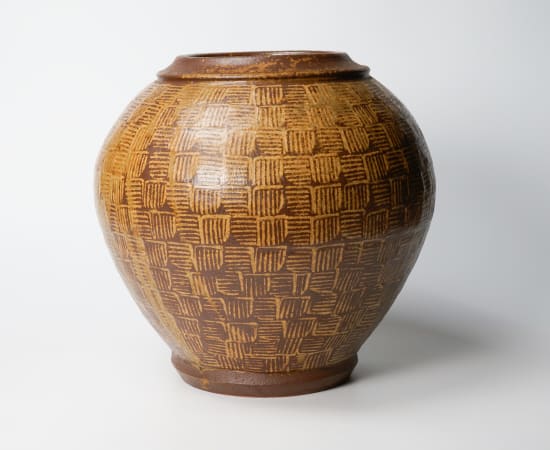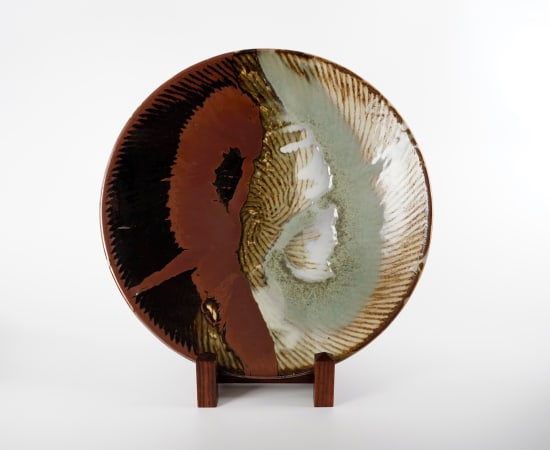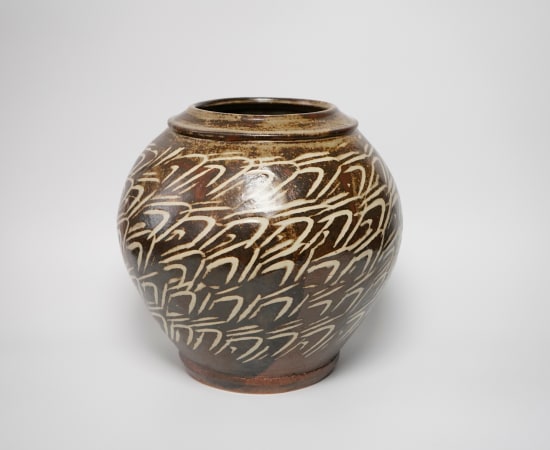Shimaoka Tatsuzo (1919-2007) was a Japanese master potter who was officially designated an Living National Treasure for his innovations in ceramic techniques in 1966. He was a pupil and close associate of Hamada Shoju, one of the founders with Yanagi Soetsu and Bernard Leach of the Japanese Mingei (Folk Craft) movement. He lived and worked in the pottery village of Mashiko where his kiln was next door to that of Hamada. In later life he travelled widely in foreign countries visiting Britain on a number of occasions. Consequently, there are fine examples of his pots in the British Museum and the Victoria and Albert Museum, the Metropolitan Museum of Art (NYC), and more.
Born in Tokyo, Shimaoka was the son of a braid and cord maker. After a trip to the Kyoto Folk Craft Museum, he was inspired to pursue pottery at the Tokyo Institute of Technology. He was a pupil of the Mingei master Hamada Shoji, and a close associate of Yanagi Soetsu, both of whom introduced him to the techniques and traditions of Japanese pottery. He was also affiliated with Bernard Leach, after having travelled to Britain on multiple occasions; Shimaoka’s influence on the international folk craft movement is palpable.
The onset of the Second World War interrupted his practice as a craftsman. Only after returning to his work in 1946 did his ceramics tackle more complex art historical techniques. Namely, Shimaoka was deeply influenced by the Jomon period of Japanese history, known for its distinctive pottery with intricate patterns and designs. After having studied with an archaeologist on Jomon artefacts, he subsequently incorporated Jomon-esque motifs into his work, but adapted it to his own processes by incorporating the use of cords and braids to replicate the decorative surfaces of Jomon ceramics. He utilized different types of wood ash glaze bring out the rope patterns. In 1954, built his own Nobori-Gama (wood-fired climbing kiln) in Mashiko to hone these techniques.
Shimaoka was also influenced by Western developments in Modern art aesthetics. He was inspired by the compositions of Henri Matisse, whose graphic abstract patterning can be seen on the surfaces of Shimaoka’s surface designs. Shimaoka was designated the title of Living National Treasure in 1966 for his innovation within Mingei and the Mashiko pottery scene.





